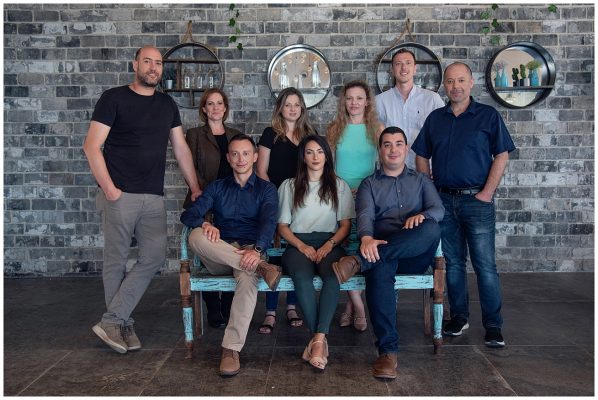The funding will support NanoVation in the development and commercialization of its SenseGuard™ device, which targets hundreds of millions of patients worldwide with COPD (Chronic Obstructive Pulmonary Disease) and other respiratory diseases
Israeli medical startup NanoVation has been awarded a €2.5 million grant as part of the European Union’s prestigious Horizon 2020 EIC Accelerator program. The Haifa based company is developing a new respiratory monitoring device, based on its proprietary nano-sensor technology. The device targets monitoring and management of patients with various respiratory conditions such as Chronic Obstructive Pulmonary Disease (COPD), which was cited as the third leading cause of death in the world by the World Health Organization. The grant will be utilized within the “SenseGuard” project and will allow NanoVation to further develop and commercialize their SenseGuard™ device for monitoring patients at hospitals and at home.
SenseGuard™ is a wireless wearable medical device for continuous monitoring of patients’ breathing, based on the startup’s unique technology – a first of a kind nano-based respiratory sensor. The device has already gone through clinical trials and received CE marking, proving that the technology is both safe and highly accurate in monitoring the respiration of patients. It is currently being deployed in hospitals in Israel and the EU for further clinical research of its state-of-the-art capabilities.
Unlike existing solutions, SenseGuard™ is capable of measuring lung-function from patients’ regular breathing without any need for cooperation or unpleasant test execution by the patient. Approximately 328 million people worldwide are classified as suffering from COPD. The economic cost is huge and estimated at an annual spending of $49 billion in the U.S. and a similar amount in the EU. Approximately half of all direct COPD costs are associated with hospitalization due to deterioration in the respiratory function of only 6.4% of the patients. These costs could be significantly reduced through a high-quality and simple-to-use home monitoring device that identifies any deterioration early and leads to a dramatic reduction in the need for hospitalization through treatment intervention at the patient’s home.
Dr. Gregory Shuster, CEO and co-founder of NanoVation, commented: “Lung function changes indicating a worsening condition can appear up to three weeks before reaching an acute state that often leads to hospitalization and a lengthy rehabilitation. The residual lung damage will impair quality of life, or in the worst-case lead to death.”
“Our pioneering device aims to enable identification of the early signs of deterioration in lung function, and enables early treatment,” noted Shuster. “The cost of preventive intervention and treatment ranges from tens to hundreds of dollars, while they minimize unnecessary hospitalizations, which would cost between $10,000 and $40,000 for an individual in the US and between €3,000 and €10,000 in Europe, and translate into billions of dollars annually for the entire health system.”
Dr. Shuster added: “The Horizon 2020 Program grant is a strong vote of confidence in NanoVation and will help us dramatically reduce the clinical and economic burden of COPD and other respiratory diseases.”
Horizon 2020 is the biggest EU Research and Innovation program ever, and one of the most competitive. It supports Small and Medium-sized Enterprises (SME) with breakthrough innovation projects and aims to promote and fund discoveries and world-firsts by taking unique ideas from the lab to the market. The round of applications in October 2019 was highly competitive with a success rate of 4% from 1852 submitted proposals.
Main Photo: NanoVation team. Photo credit – Sharon Buchbinder-Marom



















